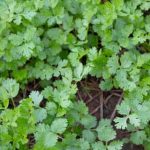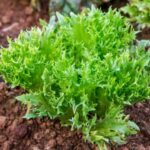Are you interested in starting an easy vegetable gardening hobby? Vegetable gardening not only allows you to enjoy fresh produce straight from your backyard but also provides a rewarding and therapeutic experience for beginners. In this article, we will explore the reasons why vegetable gardening is a must-try hobby for those looking to connect with nature and cultivate their green thumb.
One of the many benefits of vegetable gardening is the access to fresh, nutritious produce just steps away from your home. By growing your own vegetables, you can ensure that they are free from harmful pesticides and chemicals.
Additionally, tending to a garden can be a great stress-reliever and a way to stay active while enjoying the outdoors. Whether you have a spacious backyard or just a small balcony, there are various ways to start your own easy vegetable garden.
With the right knowledge and preparation, even beginners can successfully grow their own vegetables. From choosing the perfect location with adequate sunlight, soil, and water conditions to selecting easy-to-grow vegetables like tomatoes, zucchinis, and lettuce, this article will provide you with all the essential information you need to kickstart your vegetable gardening journey. So grab your gloves and shovel as we delve into the world of easy vegetable gardening.
Choosing the Right Location for Your Vegetable Garden
When it comes to starting an easy vegetable garden, one of the most critical decisions you’ll make is choosing the right location for your vegetable plot. Sunlight, soil quality, and water availability are key factors to consider when selecting the perfect spot for your plants to thrive.
Most vegetables require at least 6 hours of sunlight per day to grow and produce a good harvest. Be sure to observe your yard throughout the day to determine which areas receive the most sunlight.
In addition to sunlight, pay attention to the soil in your chosen location. Vegetables thrive in well-draining soil that is rich in organic matter. Conduct a simple soil test to check for pH levels and any deficiencies in nutrients that may impact plant growth. If needed, amend the soil with compost or other organic materials to improve its quality before planting.
Lastly, consider water access when deciding on a location for your vegetable garden. Vegetables need consistent watering, especially during hot summer months. Ensure that your chosen spot is near a water source for easy irrigation. Investing in a soaker hose or drip irrigation system can make watering more efficient and ensure that your plants receive adequate moisture without waste.
| Key Considerations for Choosing the Right Location | Recommendations |
|---|---|
| Sunlight | Select an area with at least 6 hours of sunlight daily. |
| Soil Quality | Check soil pH levels and amend with organic matter if necessary. |
| Water Access | Choose a location near a water source for convenient irrigation. |
Selecting Easy-to-Grow Vegetables for Beginners
One of the key factors in ensuring a successful and enjoyable vegetable gardening experience is choosing the right vegetables to grow. For beginners looking to dip their toes into the world of gardening, selecting easy-to-grow vegetables can make the process more manageable and rewarding. Tomatoes, zucchinis, and lettuce are excellent choices for those new to gardening, as they are relatively low-maintenance and produce bountiful harvests with proper care.
To help you get started on your easy vegetable gardening journey, here are some tips on why tomatoes, zucchinis, and lettuce are great options for beginners:
- Tomatoes: These versatile and delicious fruits (yes, fruits.) are a favorite among many gardeners due to their ease of growth and wide variety of flavors. Whether you opt for cherry tomatoes for snacking or beefsteak tomatoes for slicing, tomatoes thrive in sunny locations with well-draining soil. With regular watering and proper support as they grow, you can enjoy a plentiful harvest of homegrown tomatoes throughout the season.
- Zucchinis: Another beginner-friendly vegetable, zucchinis are prolific producers that offer a bountiful yield with minimal effort. These summer squash plants prefer warm weather and fertile soil rich in organic matter. With consistent watering and occasional fertilization, you can expect an abundance of zucchinis ready for harvesting within a few weeks of planting.
- Lettuce: For those looking to start small or with limited space, lettuce is an excellent choice for container gardening or raised beds. This cool-season crop thrives in partially shaded areas with moist soil conditions. By regularly harvesting outer leaves while allowing the plant to continue growing from the center, you can enjoy fresh salads throughout the season.
By choosing to grow easy-to-grow vegetables like tomatoes, zucchinis, and lettuce as a beginner gardener, you will not only gain valuable experience but also reap the rewards of your efforts through a plentiful harvest of fresh produce ripe for enjoying at home. Remember to provide these plants with proper care in terms of sunlight, water, and soil health to ensure successful growth and abundant yields in your vegetable garden.
Let’s explore more about tomato cultivation on Easy Vegetable Gardening site next.
Preparing the Soil
When it comes to easy vegetable gardening, one of the key factors that can greatly impact the success of your garden is the quality of your soil. Having good soil health is essential for providing your vegetables with the nutrients they need to thrive. Here are some important steps to take when preparing the soil for your vegetable garden:
- Test Your Soil: Before planting anything, it’s a good idea to test your soil. You can purchase a DIY soil testing kit or send a sample to a lab for analysis. This will help you determine the pH level of your soil and identify any deficiencies that need to be addressed.
- Amend Your Soil: Based on the results of your soil test, you may need to amend your soil with organic matter such as compost, aged manure, or peat moss. Adding organic matter can improve drainage, fertility, and overall soil structure.
- Till Your Soil: Once you have amended your soil, it’s time to till it. Tilling helps break up compacted soil and incorporates amendments evenly throughout. Avoid over-tilling, as this can disrupt beneficial organisms in the soil.
In addition to these steps, consider using raised beds or containers if you have poor quality soil in your garden area. Raised beds allow for better control over the type of soil used and can make gardening more accessible for beginners. By taking the time to properly prepare your soil before planting, you’ll be setting yourself up for a successful and bountiful harvest of fresh vegetables.
Planting Your Vegetables
When planting your vegetables, it is essential to consider spacing and depth requirements for each type of plant. Proper spacing ensures that each plant has enough room to grow without competition from neighboring plants. It also helps with air circulation and reduces the risk of diseases spreading among crowded plants.
Depth requirements vary depending on the vegetable, so it is important to follow instructions provided on seed packets or plant labels. Planting too shallow or too deep can affect germination rates and overall plant health.
| Vegetable | Recommended Spacing |
|---|---|
| Tomatoes | 18-24 inches apart |
| Zucchinis | 24-36 inches apart |
| Lettuce | 6-12 inches apart |
By following these guidelines for planting your vegetables correctly, you’ll set yourself up for a successful and bountiful harvest in your vegetable garden. Remember that each type of vegetable has its own specific needs, so take the time to research and plan accordingly before putting them in the ground.
Easy Maintenance Tips
Maintaining your vegetable garden is vital for ensuring a bountiful harvest. By implementing easy maintenance tips such as proper watering, fertilizing, and pest control strategies, you can help your plants thrive and produce delicious vegetables for you to enjoy.
Watering
One of the most crucial aspects of maintaining a healthy vegetable garden is providing adequate water for your plants. Vegetables need consistent moisture to grow properly, so it’s essential to water them regularly. It’s best to water in the morning to avoid evaporation during the heat of the day. Additionally, make sure to water at the base of the plants to prevent moisture-related diseases from developing on the leaves.
Fertilizing
Fertilizing your vegetable garden is important for providing essential nutrients that might be lacking in your soil. Consider using organic fertilizers such as compost or manure to enrich the soil naturally. You can also opt for store-bought fertilizers specifically formulated for vegetables. Be mindful not to over-fertilize, as this can lead to nutrient imbalances and harm your plants.
Pest Control Strategies
Dealing with pests in your vegetable garden can be frustrating, but there are several easy strategies you can implement to keep them at bay. One method is companion planting, where certain plants are grown together to deter pests naturally. Additionally, using physical barriers like row covers or hand-picking pests off your plants can help reduce pest populations. If necessary, consider using organic pesticides as a last resort while being careful not to harm beneficial insects in your garden.
By following these easy maintenance tips for watering, fertilizing, and pest control in your vegetable garden, you’ll set yourself up for a successful growing season with a plentiful harvest of fresh produce right at your fingertips. Remember that consistency is key when it comes to caring for your garden, and soon enough, you’ll be enjoying the rewards of your hard work with delicious homegrown vegetables on your table.
Harvesting and Enjoying the Fruits of Your Labor
Knowing When to Harvest
After months of nurturing your vegetables, the time has finally come to harvest and enjoy the literal fruits of your labor. One of the keys to successful harvesting is knowing when each vegetable is at its peak ripeness for picking.
For instance, tomatoes should be harvested when they are firm but have a slight give when gently squeezed, while zucchinis are best picked when they are still small and tender. On the other hand, leafy greens like lettuce should be harvested when the leaves are full and vibrant.
Harvesting Techniques
When it comes to actually harvesting your vegetables, there are a few best practices to keep in mind. It’s important not to rush the process and carefully cut or pull each vegetable from the plant to avoid damaging it. Use sharp scissors or gardening shears for delicate crops like lettuce or herbs, while vegetables like tomatoes can be gently twisted off the vine. Remember to handle your harvest with care to prevent bruising or premature spoilage.
Enjoying Your Bounty
Once you have successfully harvested your vegetables, it’s time to enjoy them in all their fresh and flavorful glory. From enjoying a crisp garden salad with your freshly picked lettuce and tomatoes to sautéing zucchinis in a tasty stir-fry, there are countless ways to savor the produce from your easy vegetable gardening efforts.
And don’t forget about preserving your harvest by canning, freezing, or pickling any excess vegetables for later enjoyment during the off-season. The satisfaction of growing and consuming your own homegrown produce is truly rewarding.
Troubleshooting Common Issues
As you embark on your journey into easy vegetable gardening, it is important to be prepared for potential challenges that may arise as your plants grow. Troubleshooting common issues such as pests, diseases, and nutrient deficiencies is a crucial part of maintaining a healthy and thriving garden. By being proactive and identifying problems early on, you can take the necessary steps to address them and ensure the success of your vegetable garden.
One of the most common issues that gardeners face is dealing with pests that can wreak havoc on their crops. From aphids to caterpillars, these unwanted visitors can quickly decimate your plants if left unchecked. Implementing pest control strategies such as using organic insecticides or introducing beneficial insects like ladybugs can help protect your vegetables from harm.
In addition to pests, diseases can also pose a threat to your vegetable garden. Fungal infections, bacterial blights, and viral diseases are just some of the common issues that may arise. Proper sanitation practices, crop rotation, and selecting disease-resistant varieties can help prevent the spread of diseases in your garden.
Regularly inspecting your plants for signs of disease and promptly addressing any issues can help mitigate their impact and keep your vegetables healthy. By staying vigilant and proactive in addressing potential problems in your vegetable garden, you can ensure a bountiful harvest of fresh produce for you and your family to enjoy.
Frequently Asked Questions
What Is the Easiest Vegetable Garden for Beginners?
The easiest vegetable garden for beginners typically includes plants like tomatoes, lettuce, radishes, and green beans. These vegetables are relatively low maintenance and don’t require advanced gardening skills to thrive.
What Should I Put in My Beginner Vegetable Garden?
In a beginner vegetable garden, it’s important to include a variety of vegetables that are easy to grow and maintain. Consider planting tomatoes, cucumbers, zucchini, peppers, and herbs like basil and parsley. These plants are not only simple to care for but also provide a range of flavors for your kitchen.
What Vegetable Is Easy and Fast to Grow?
Radishes are known for being one of the easiest and fastest-growing vegetables in a garden. They can be ready for harvest in as little as three weeks after planting the seeds. Radishes also require minimal space and are perfect for beginners looking for quick results in their garden.

If you’re looking to get into vegetable gardening, or are just looking for some tips on how to make your current garden better, then you’ve come to the right place! My name is Ethel and I have been gardening for years. In this blog, I’m going to share with you some of my best tips on how to create a successful vegetable garden.





